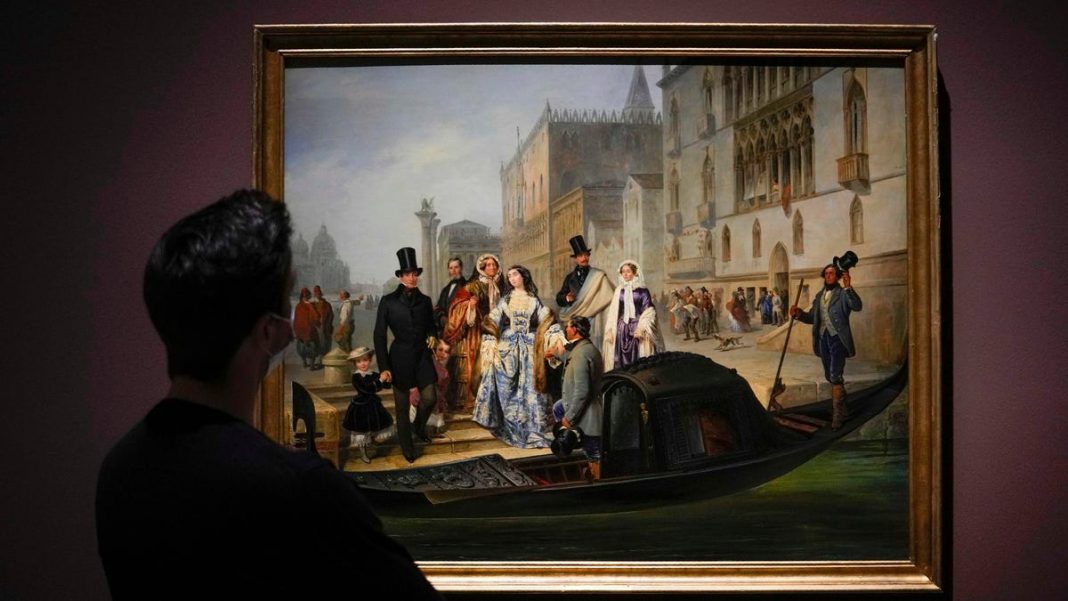According to Finland’s foreign ministry, three shipments of Russian art that had been on loan to museums and galleries but had been held by Finnish customs officers on their way back to Russia have been approved to be returned to their respective destinations.
The paintings and sculptures, which are valued at 42 million euros ($46 million), had been on loan from Russian museums to organisations in Italy and Japan for the previous two years. It is believed that they were apprehended last weekend at the border crossing with Finland’s Vaalimaa, on suspicion of violating European Union sanctions imposed after Russia’s invasion of Ukraine.
In a telephone interview, Hanni Hyvärinen, a spokesperson for Finland’s Ministry of Foreign Affairs, said that the decision had been reached in consultation with European Union officials. According to a statement from the ministry, the union intends to exclude specific cultural assets from the sanctions regime.
“Often, under these kind of restrictions, cultural products are spared since they are non-monetary and are not directly tied to the war effort,” said Jacob Kirkegaard, a senior fellow in the Brussels office of the research organisation the German Marshall Fund.
The seizure had raised serious concerns about how Europe would deal with the return of art on loan from Russian museums, which had for decades loaned some of the world’s greatest works of art to exhibitions in the West, giving audiences in the West a glimpse of cultural treasures that were otherwise unavailable to the public.
Art from the State Hermitage Museum in St. Petersburg and other Russian institutions, for example, has lately been on exhibit in museums in Paris, London, and Rome, among other cities.
Supporters of cultural exchanges as bridge-building exercises had anticipated that authorities would follow the international conventions that regulate such loans. However, that has not been the case. While some commentators believe that art intimately affiliated with the Russian state or sanctioned persons might be acceptable targets of sanctions, others believe that Russia’s war on civilians and devastation of cities could be a legitimate target of penalties.
“It has been verified by European authorities that the displays that participated in European exhibitions do not come under the sanctions list,” said Olga Lyubimova, the Russian cultural minister, in a message on the messaging app Telegram.
In her statement, she said the artworks had been displayed at two exhibitions in Italy — one in Milan and one in Udine — and included work from collections held at the State Hermitage, the Tsarskoye Selo museum reserve, the Pavlovsk museum reserve, the State Tretyakov Gallery, and The State Museum of the East, among other institutions.
The Pushkin State Museum of Fine Arts in Russia has loaned works to the Chiba City Museum in Japan, which displayed them. Lyubimova said that the Russian authorities had already began the process of reclaiming the artefacts from their possession.
In the aftermath of World War II, the long-term effect of the conflict on partnerships between Russian and European museums remains uncertain.
Some European art researchers were afraid that a similar freeze may now develop between Russian state museums and those in Western Europe, given the recent refusal of Russian state institutions to lend artworks to museums in the United States out of fear that they would be taken.
The governments of Austria, the United Kingdom, the Netherlands, and Spain have already requested that cultural groups refrain from collaborating with Russian state museums, even if they have been arranging shows with them for several years in advance. A number of foreign cooperation have also been put on hold by Russia.
The publication of the artworks in Finland, according to Thomas C. Danziger, an art market lawyer who provides advice on foreign loans, did not alleviate his concerns about a chilling impact on lending.
Mr. Kirkegaard stated that because art can have significant symbolic value, European authorities may have decided that keeping the artworks was not worth the potential propaganda value to President Vladimir V. Putin, because the seizure could “play into his narrative that this is really about the West wanting to destroy Russia.” Mr. Kirkegaard stated that because art can have significant symbolic value, European authorities may have decided that keeping the artworks was not worth the potential propaganda value to President Vladimir V. Putin.
The Finnish authorities indicated that the seizures were justifiable when customs inspectors seized the artworks at the border, claiming that the artworks would qualify as “luxury items,” a category that the European Union recently added in its sanctions on Russia and Iran. Analysts, on the other hand, believe that this category of penalties is unlikely to be meant to include paintings held by museums.
Former State Department official Daniel Fried, who oversaw sanctions policy under the Obama administration, said art that crossed borders might be taken under European sanctions regulations if it was held privately by an oligarch or by another person or business on the sanctions list, according to Fried.
However, even if any artworks are found to be in violation of EU rules, they would only be subject to a “asset freeze,” not confiscation, under present EU legislation. According to Jonathan Hackenbroich, a policy fellow at the European Council on Foreign Relations in Berlin, “you don’t have access to it anymore.”
Similar to how Western authorities have lately taken yachts and other property belonging to oligarchs, there would be no transfer of ownership and the art would continue to belong to its original owners, who would be entitled to have it restored to them if the sanctions were repealed.

